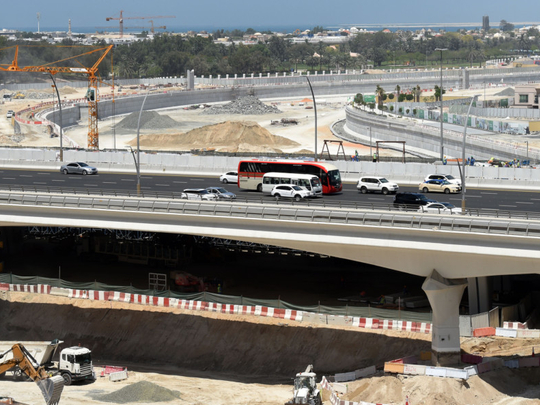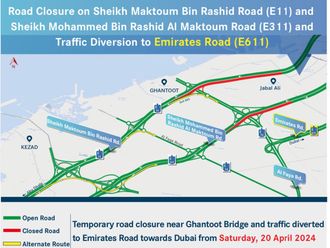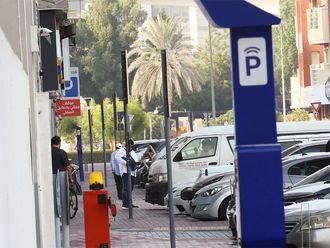
Dubai: The second half of the Shaikh Zayed Road flyover, part of the Dubai Water Canal project, will be open by July, the Roads and Transport Authority (RTA) said on Saturday.
Work on the 16-lane flyover began in November 2014 and in January this year RTA opened the first part of the flyover for Sharjah-bound traffic. From July, Abu Dhabi-bound traffic will also move on the flyover, allowing for canal drilling work underneath.
Mattar Al Tayer, director-general and chairman of the Board of Executive Directors of RTA, said that work on the canal is on schedule and 92 per cent of the project has been completed.
The flyover, located near interchange two on Shaikh Zayed Road, stretches for 800 metres and will allow passage of yachts up to 8.5 metres high.
Meanwhile, RTA has awarded a contract worth Dh703 million for Phases 4 and 5 of the canal project.
Phase 4, which costs Dh307 million, will see completion of infrastructure works required to serve property development on both sides of the canal, including roads works and utility lines.
Phase 5, which is being carried at a cost of Dh396 million, will link the Business Bay Canal with the Dubai Water Canal terminating at the Arabian Gulf. Work includes building quay walls of precast concrete slabs all along the stretch of the canal and diverting utility lines and key services to give way for completing the construction work of the canal.
Phase 5 also includes the treatment of hyper-saline water of the Business Bay Lakes, removing sand barriers in the course of the Canal, and constructing three marine transport stations on both sides of the canal.
Both phases are set for completion by the end of September.
The canal stretches 3.2km from the Business Bay Canal up to the Arabian Gulf, cutting across Shaikh Zayed Road, Al Safa Park, Al Wasl Road and Jumeirah Road.
The canal’s width ranges from 80 to 120 metres, and has a depth of up to 6 metres with the tide. Bridges crossing the Canal rise more than eight metres allowing 24-hour free navigation in the Canal, which will add 6km to the Dubai Waterfront.
The canal will be served by modern water transport means, including water taxis and ferries.
Work under phase two of the project includes constructing bridges on Al Wasl and Jumeirah roads as well as building a multi-tier interchange to better organise traffic movement between Al Wasl, Hadiqa and Athar roads, replacing the existing traffic lights.
According to RTA, 86 per cent of phase two has been completed, with a flyover linking Athar Road to Hadiqa Street already opened for traffic.
In Phase 3, 75 per cent work has been completed, including drilling, building quay walls, and constructing three pedestrian bridges linking the two sides of the Canal at key locations to ease pedestrian mobility.
10 marine transport stations are also being built under phase three.
Marine transit modes are expected to lift more than 6 million passengers annually around the canal manmade islands off the coast.













